at temperature = 25°C, VDD
= 3.3 V, 50-Ω single-ended input, and 100-Ω differential output (unless otherwise
noted)
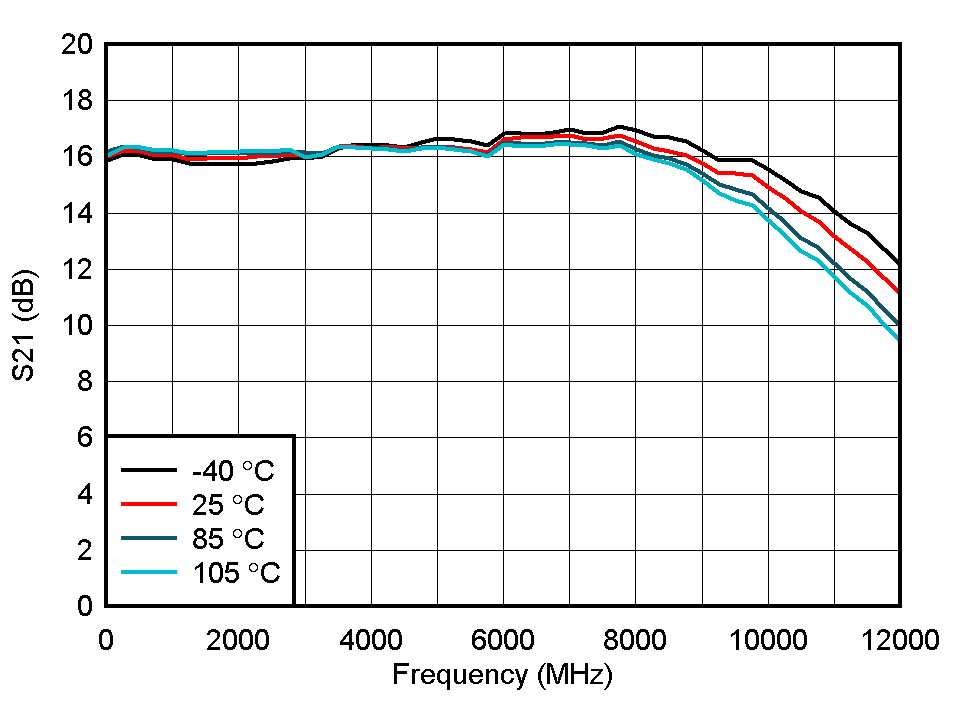 Figure 6-1 Power Gain Across Temperature
Figure 6-1 Power Gain Across Temperature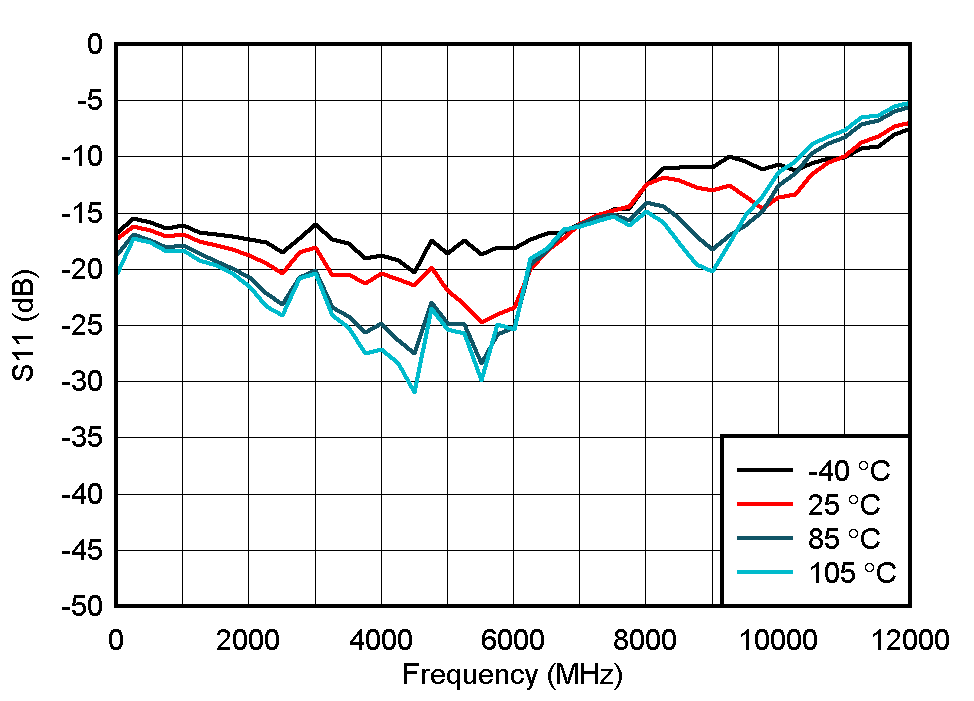 Figure 6-3 Return Loss Across Temperature
Figure 6-3 Return Loss Across Temperature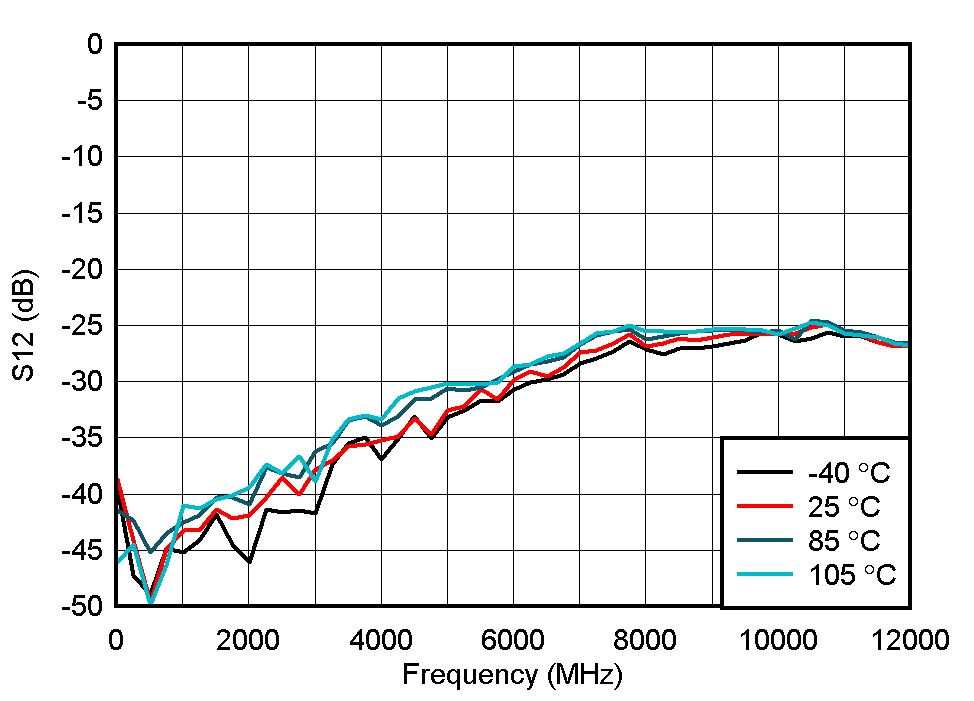 Figure 6-5 Reverse Isolation Across Temperature
Figure 6-5 Reverse Isolation Across Temperature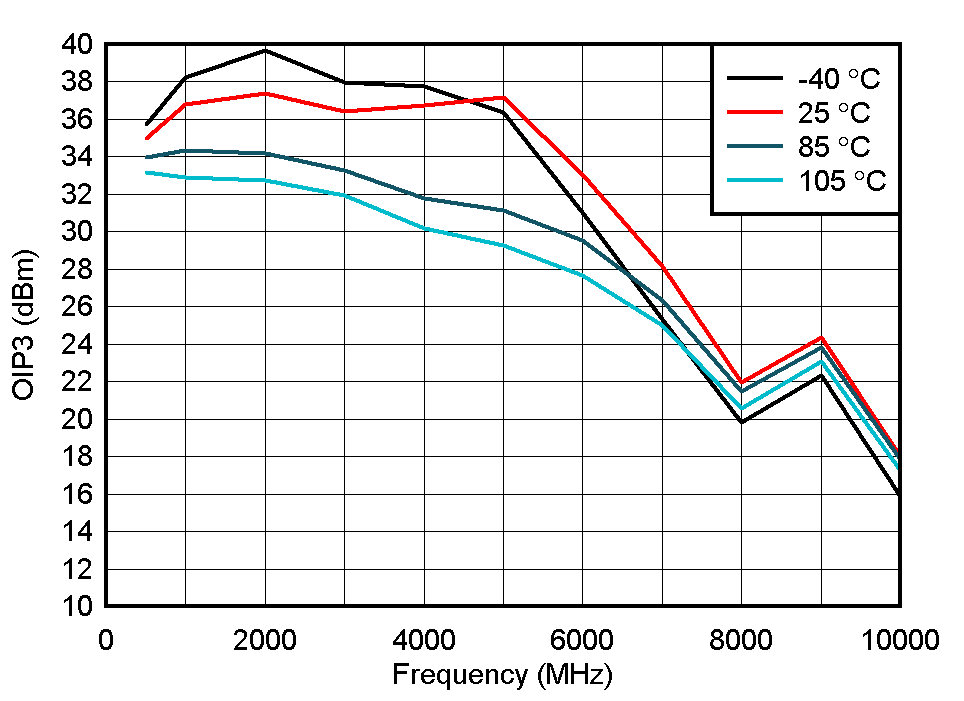
| Pout /tone = -4 dBm, 10 MHz tone spacing |
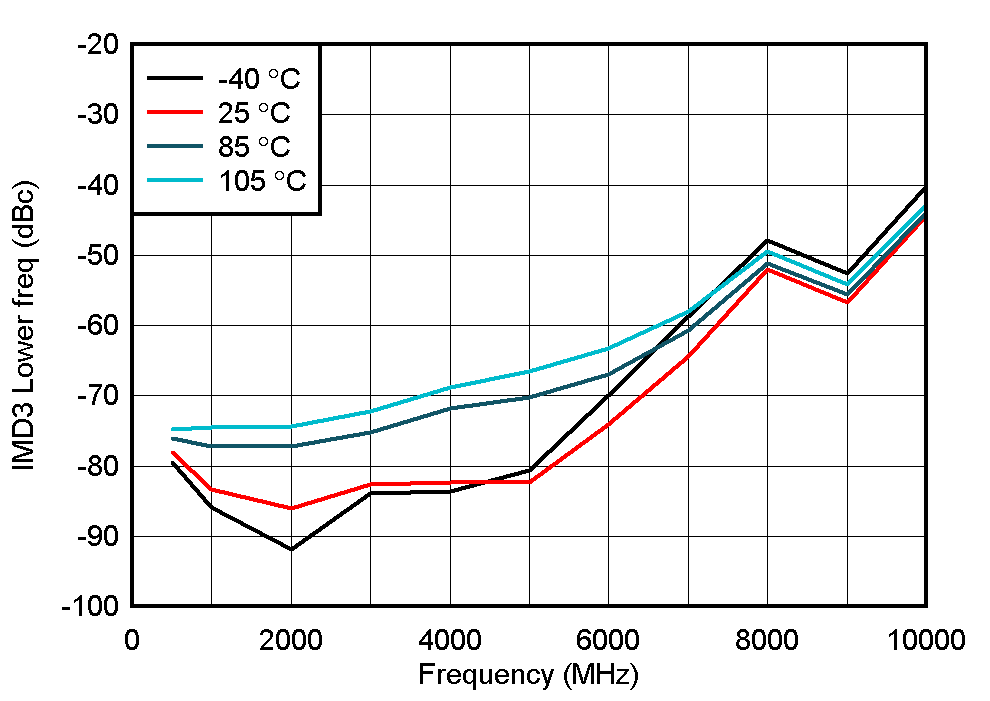
| At (2f1-f2) frequency, f1 < f2; Pout /tone = -4 dBm, 10 MHz tone spacing |
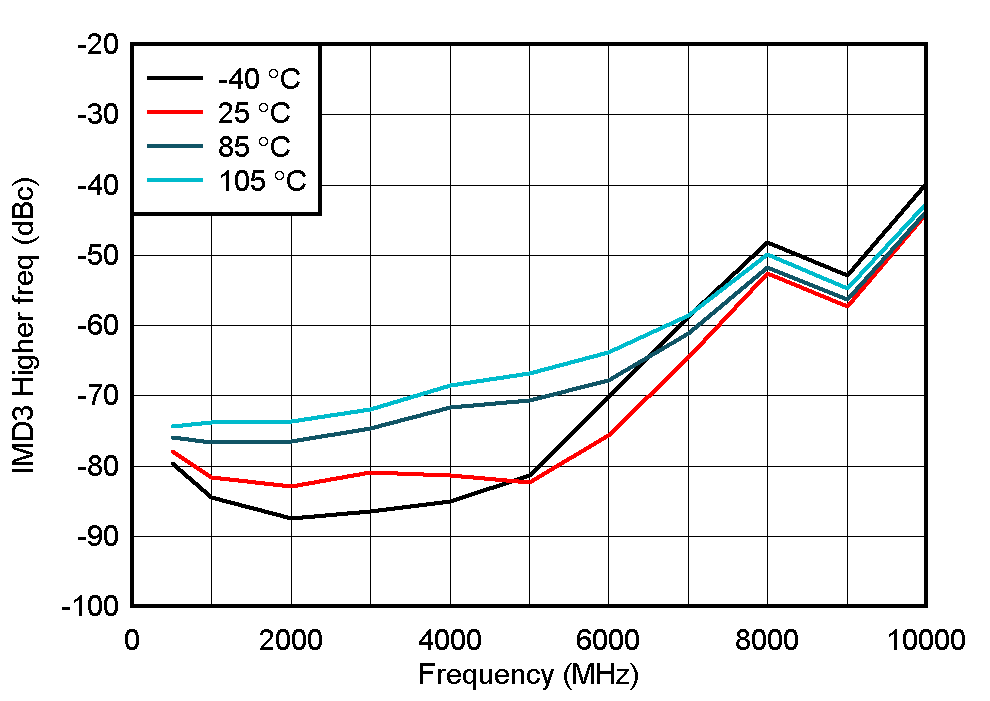
| At (2f2-f1) frequency, f1 < f2; Pout /tone = -4 dBm, 10 MHz tone spacing |
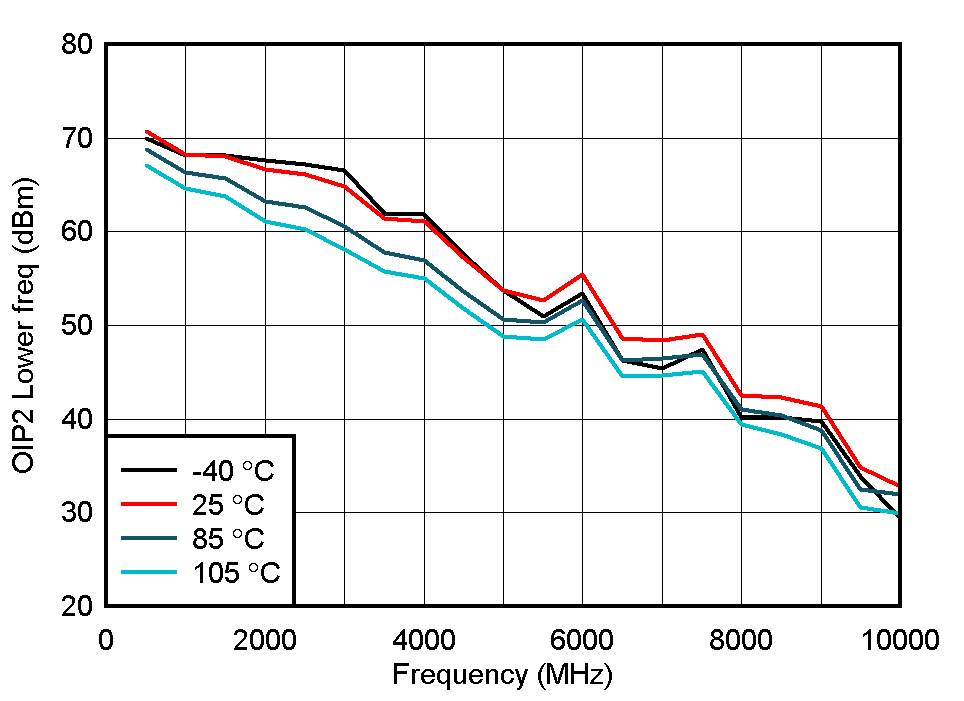
| At (f2-f1) frequency, f2 > f1; Pout /tone = -4 dBm, 10 MHz tone spacing |
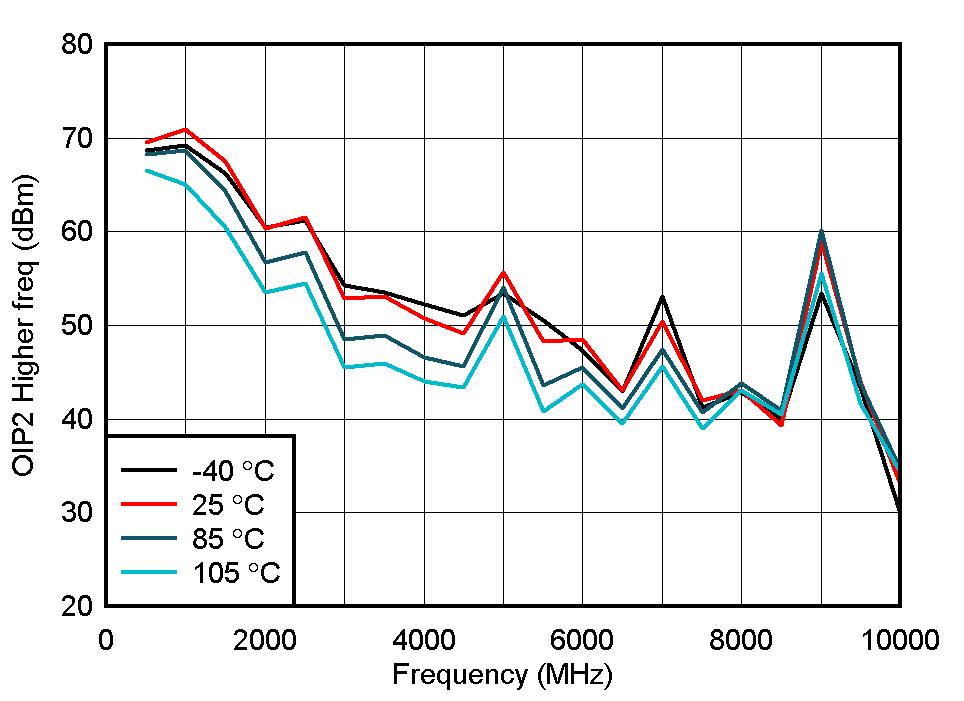
| At (f2+f1) frequency, f2 > f1; Pout /tone = -4 dBm, 10 MHz tone spacing |
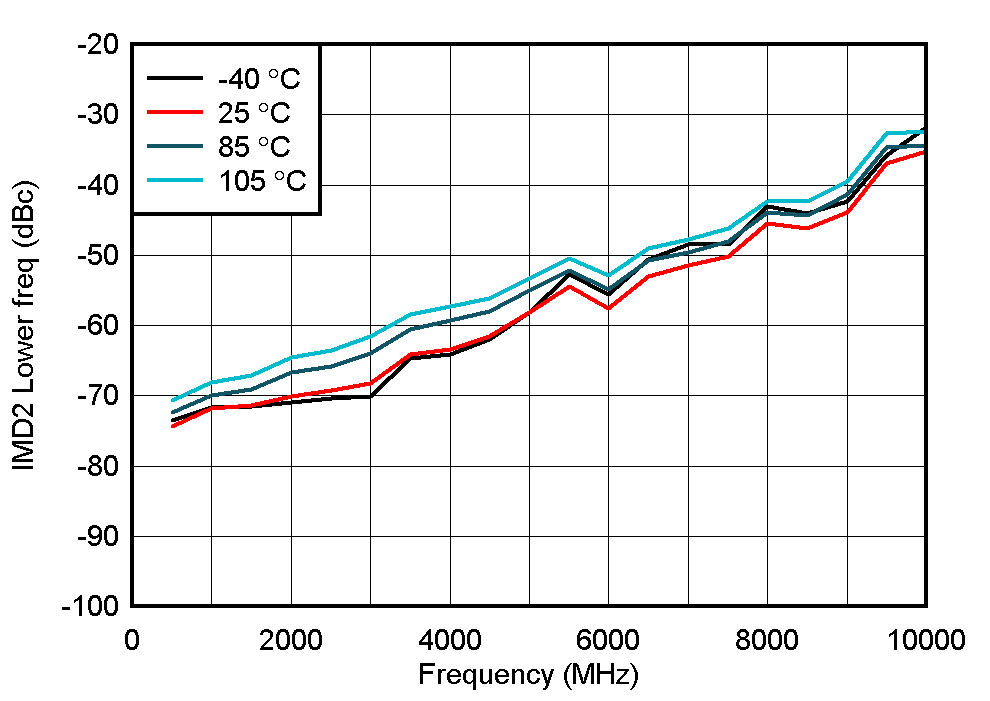
| At (f2-f1) frequency, f2 > f1; Pout /tone = -4 dBm, 10 MHz tone spacing |
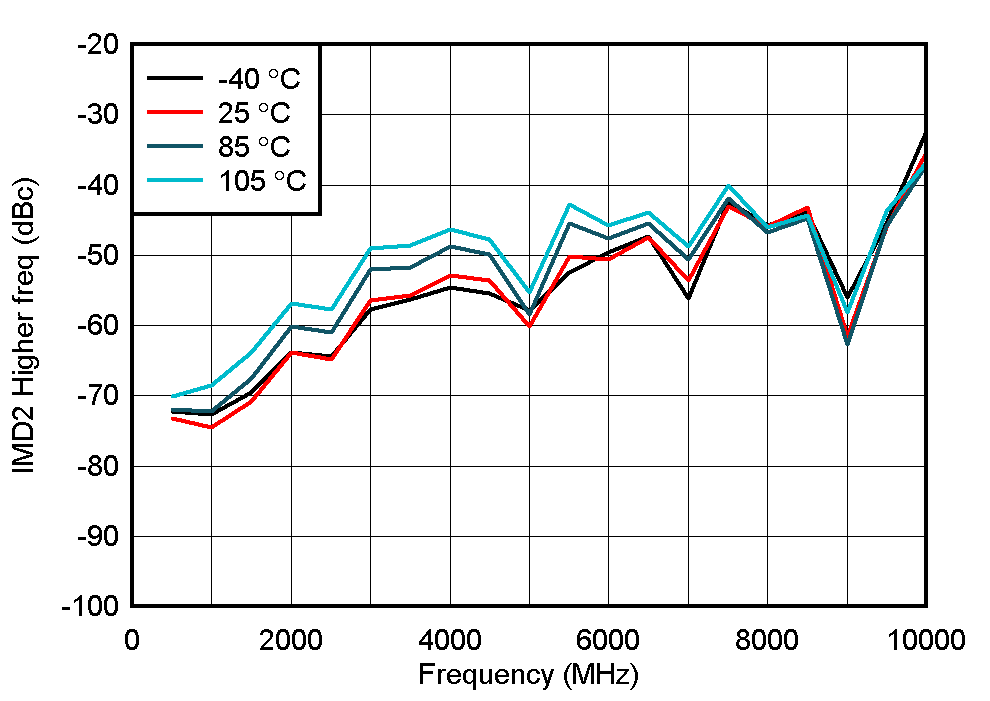
| At (f2+f1) frequency, f2 > f1; Pout /tone = -4 dBm, 10 MHz tone spacing |
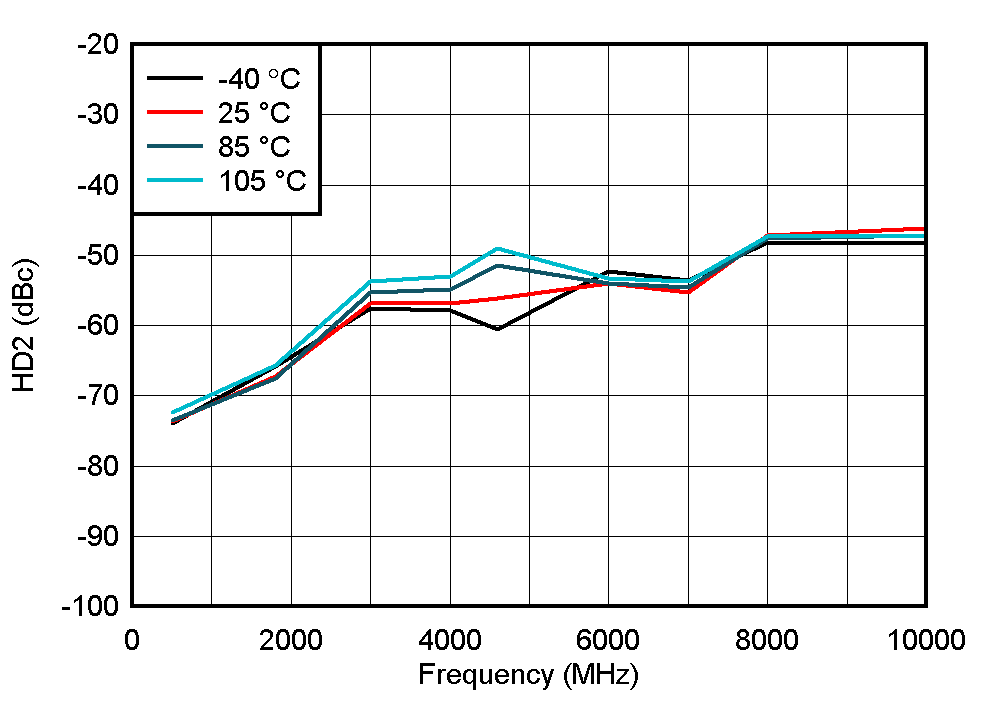 Figure 6-21 HD2 Across Temperature
Figure 6-21 HD2 Across Temperature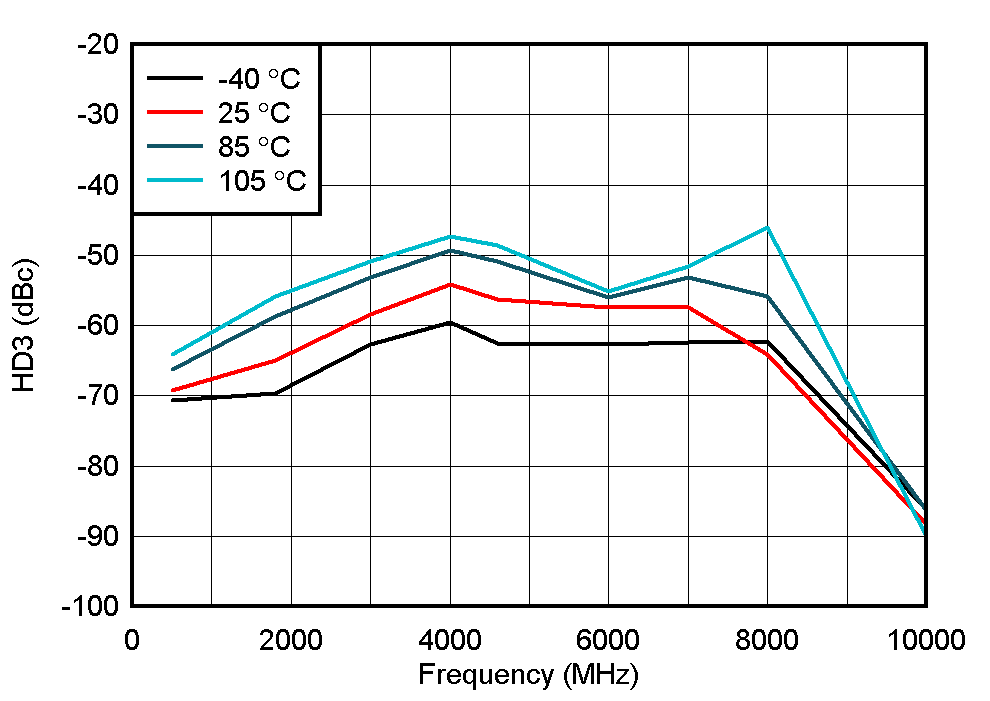 Figure 6-23 HD3 Across Temperature
Figure 6-23 HD3 Across Temperature Figure 6-25 HD2 vs Output Power
Figure 6-25 HD2 vs Output Power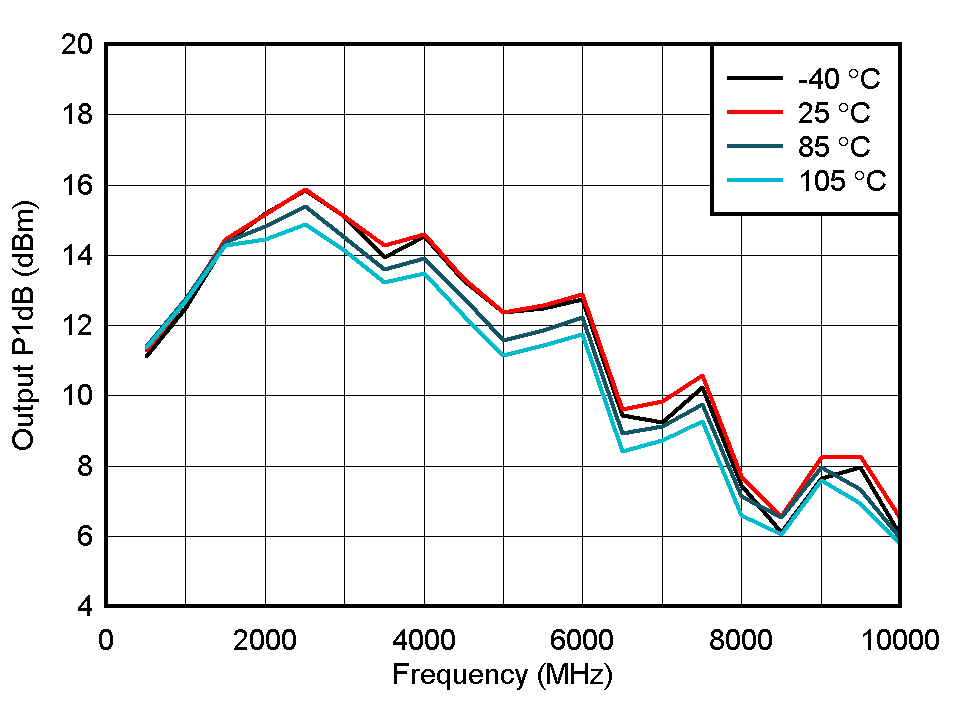 Figure 6-27 Output P1dB Across Temperature
Figure 6-27 Output P1dB Across Temperature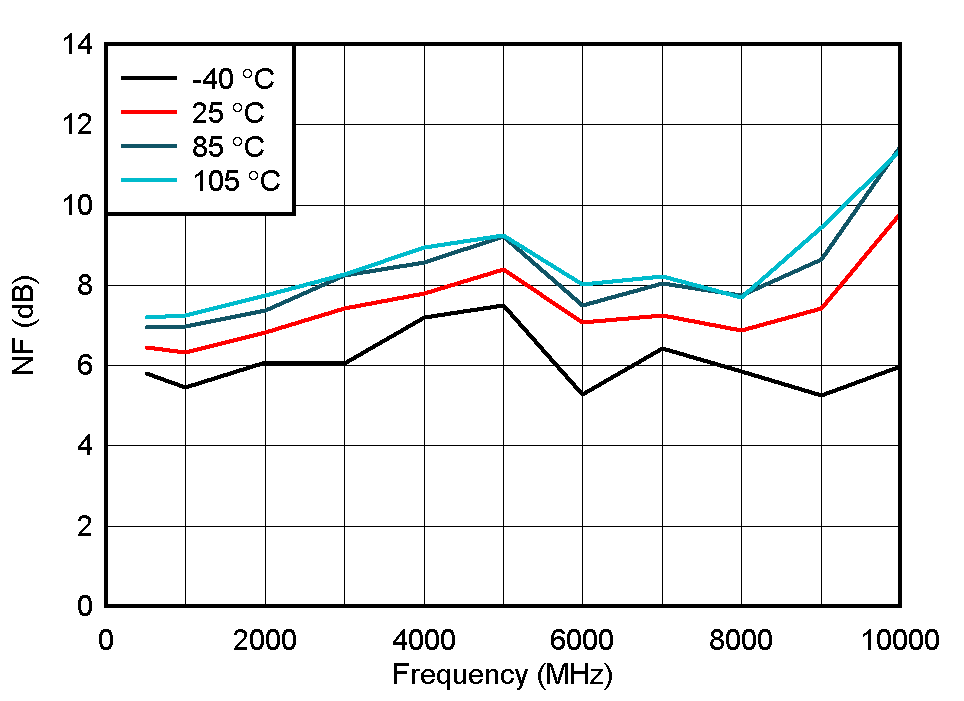 Figure 6-29 NF Across Temperature
Figure 6-29 NF Across Temperature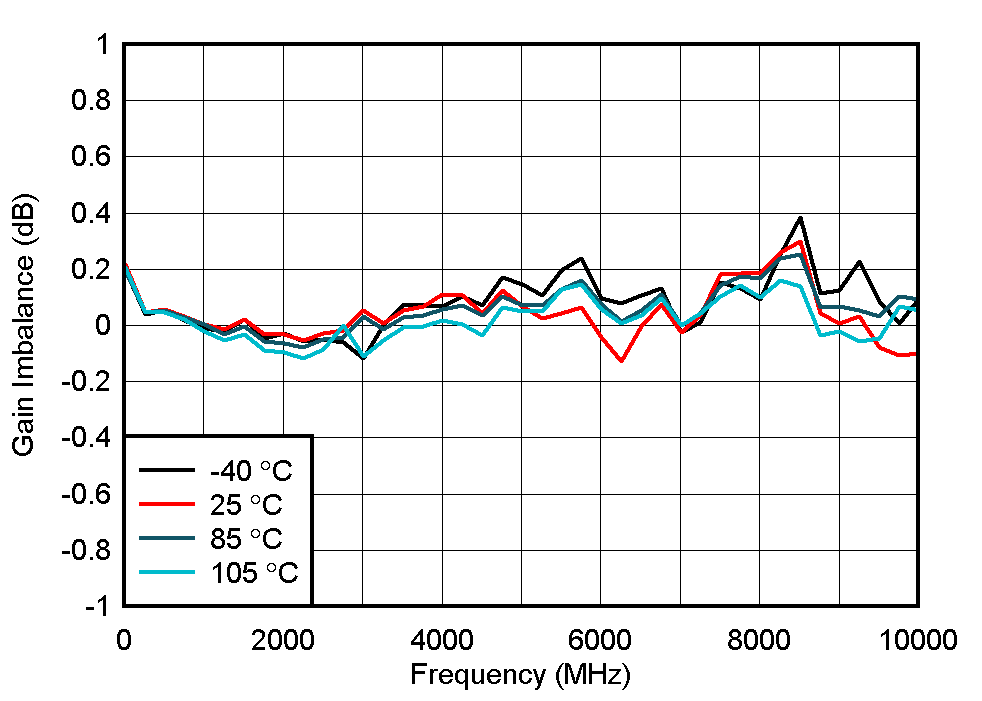 Figure 6-31 Gain Imbalance
Figure 6-31 Gain Imbalance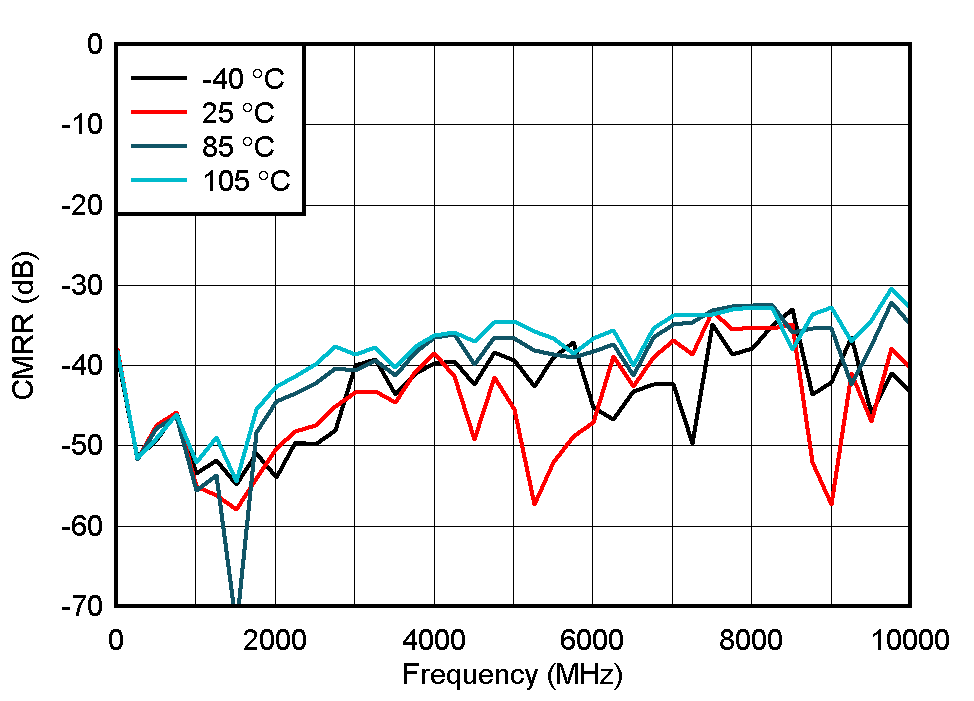 Figure 6-33 CMRR Across Temperature
Figure 6-33 CMRR Across Temperature
| Input = -2 dBm, f = 500 MHz |
 Figure 6-37 Single-Ended S11
Figure 6-37 Single-Ended S11 Figure 6-2 Power Gain Across VDD
Figure 6-2 Power Gain Across VDD Figure 6-4 Return Loss Across VDD
Figure 6-4 Return Loss Across VDD Figure 6-6 Reverse Isolation Across VDD
Figure 6-6 Reverse Isolation Across VDD
| Pout /tone = -4 dBm, 10 MHz tone spacing |

| At (2f1-f2) frequency, f1 < f2; Pout /tone = -4 dBm, 10 MHz tone spacing |

| At (2f2-f1) frequency, f1 < f2; Pout /tone = -4 dBm, 10 MHz tone spacing |

| At (f2-f1) frequency, f2 > f1; Pout /tone = -4 dBm, 10 MHz tone spacing |

| At (f2+f1) frequency, f2 > f1; Pout /tone = -4 dBm, 10 MHz tone spacing |

| At (f2-f1) frequency, f2 > f1; Pout /tone = -4 dBm, 10 MHz tone spacing |

| At (f2+f1) frequency, f2 > f1; Pout /tone = -4 dBm, 10 MHz tone spacing |
 Figure 6-22 HD2 Across VDD
Figure 6-22 HD2 Across VDD Figure 6-24 HD3 Across VDD
Figure 6-24 HD3 Across VDD Figure 6-26 HD3 vs Output Power
Figure 6-26 HD3 vs Output Power Figure 6-28 Output P1dB Across VDD
Figure 6-28 Output P1dB Across VDD Figure 6-30 NF Across VDD
Figure 6-30 NF Across VDD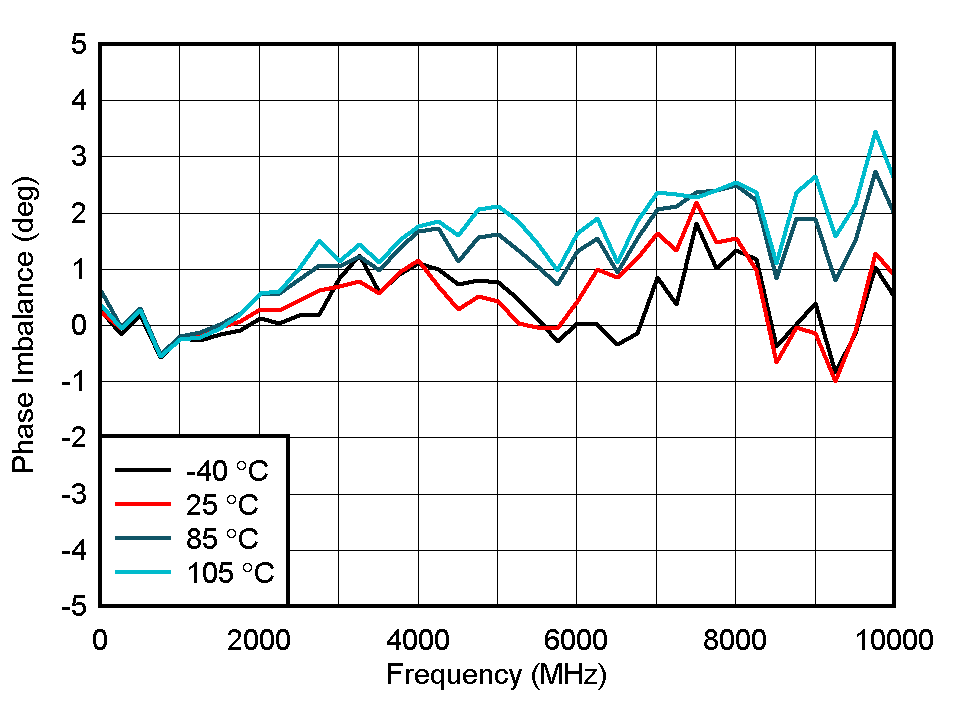 Figure 6-32 Phase Imbalance
Figure 6-32 Phase Imbalance Figure 6-34 CMRR Across VDD
Figure 6-34 CMRR Across VDD Figure 6-36 Saturation Voltage
Figure 6-36 Saturation Voltage Figure 6-38 Differential S22
Figure 6-38 Differential S22 




































